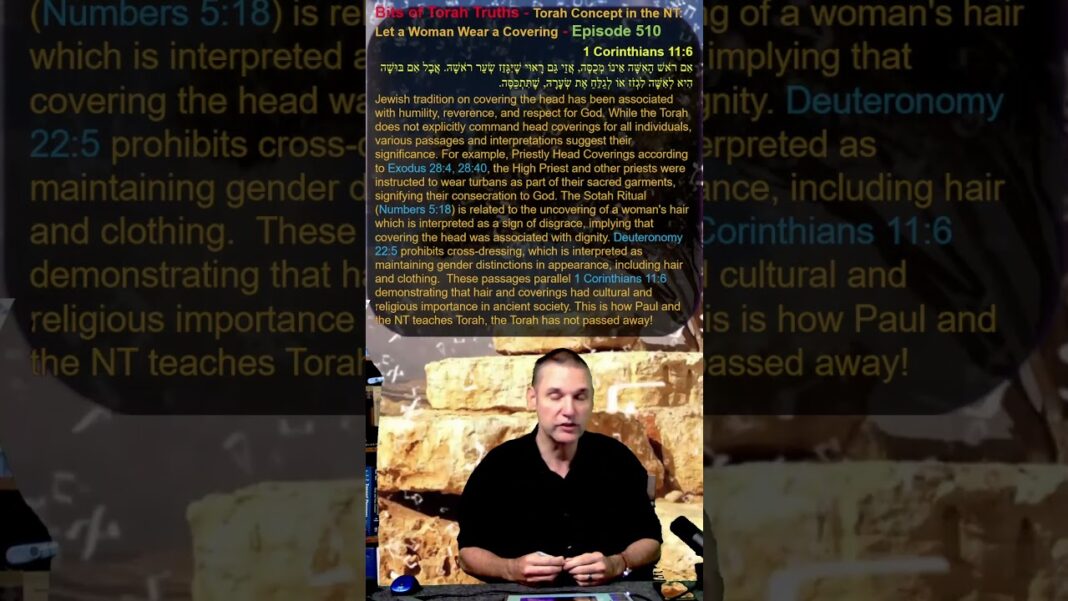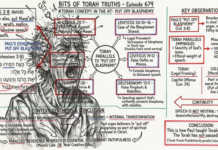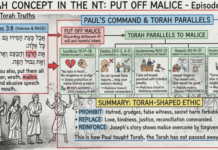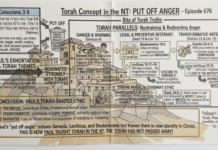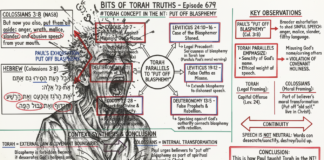Bits of Torah Truths – Torah Concept in the NT: Let a Woman Wear a Covering – Episode 510
1 Corinthians 11:6
אִם רֹאשׁ הָאִשָּׁה אֵינוֹ מְכֻסֶּה, אֲזַי גַּם רָאוּי שֶׁיִּגָּזֵז שְׂעַר רֹאשָׁהּ. אֲבָל אִם בּוּשָׁה הִיא לְאִשָּׁה לִגְזֹז אוֹ לְגַלֵּחַ אֶת שְׂעָרָהּ, שֶׁתִּתְכַּסֶּה.
#torah #torahwisdom #torahtruth #torahforlife #torah4you #torahtruth
1 Corinthians 11:6
11:6 For if a woman does not cover her head, let her also have her hair cut off; but if it is disgraceful for a woman to have her hair cut off or her head shaved, let her cover her head. (NASB)
https://www.matsati.com/index.php/category/bits-of-torah-truths/
Jewish tradition on covering the head has been associated with humility, reverence, and respect for God. While the Torah does not explicitly command head coverings for all individuals, various passages and interpretations suggest their significance. For example, Priestly Head Coverings according to Exodus 28:4, 28:40, the High Priest and other priests were instructed to wear turbans as part of their sacred garments, signifying their consecration to God. The Sotah Ritual (Numbers 5:18) is related to the uncovering of a woman’s hair which is interpreted as a sign of disgrace, implying that covering the head was associated with dignity. Deuteronomy 22:5 prohibits cross-dressing, which is interpreted as maintaining gender distinctions in appearance, including hair and clothing. These passages parallel 1 Corinthians 11:6 demonstrating that hair and coverings had cultural and religious importance in ancient society. This is how Paul and the NT teaches Torah, the Torah has not passed away!
